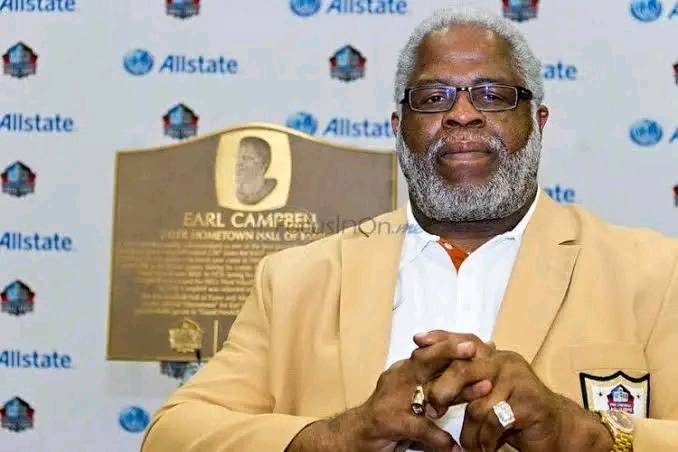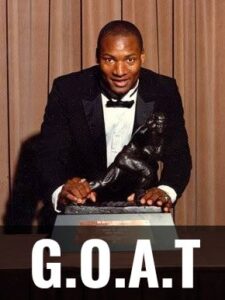Texas Longhorns to Erect Statue at Darrell K Royal-Texas Memorial Stadium Honoring Earl Campbell for His Legacy and Impact on Franchise Greatness

Texas Longhorns to Erect Statue at Darrell K Royal-Texas Memorial Stadium Honoring Earl Campbell for His Legacy and Impact on Franchise Greatness
In the world of college football, there are few players whose names become synonymous with greatness, transcending both their era and their team. One such name is Earl Campbell. Widely regarded as one of the greatest players in the history of the University of Texas Longhorns football program, Campbell’s legacy is not only etched in the history of the school but also in the hearts of its fans, in the annals of college football history, and in the fabric of Texas itself. The announcement that the University of Texas will erect a statue of Earl Campbell at Darrell K Royal-Texas Memorial Stadium is a fitting tribute to a player who defined what it means to be a Longhorn and who made an indelible mark on the sport of football. This monumental gesture comes at a time when the University is looking to honor one of its most iconic players and to reinforce the continued importance of Campbell’s contributions to both the Longhorns and the broader sports community.
Earl Campbell’s legacy is both remarkable and multifaceted. As a running back for the Texas Longhorns from 1974 to 1977, Campbell redefined the position with his rare combination of power, speed, and agility. Nicknamed the “Tyler Rose” after his hometown of Tyler, Texas, Campbell embodied the spirit and toughness of the state. He was a player who not only excelled on the field but also represented the values of hard work, perseverance, and commitment that are central to the Texas football program.
At the University of Texas, Campbell was a dominant force, earning numerous accolades and setting records that still stand today. He won the prestigious Heisman Trophy in 1977, an award given to the best player in college football, cementing his place among the all-time greats. His time at Texas was marked by a relentless style of running that wore down defenses, making Campbell nearly impossible to stop. He was not just a player; he was an institution within the program, a symbol of excellence, and a source of pride for Longhorns fans across the nation.
Campbell’s career at Texas was not just defined by his individual achievements, but also by his ability to elevate his team. Under his leadership, the Longhorns captured the 1977 Southwest Conference title and earned a trip to the Cotton Bowl, where they faced off against the University of Notre Dame. The 1977 season, in particular, was a crowning achievement for Campbell, who rushed for 1,744 yards and scored 19 touchdowns. He was a player who could take over a game, and he did so on numerous occasions.
While Campbell’s on-field accomplishments were extraordinary, it was his leadership and ability to inspire his teammates that set him apart. He became a cornerstone for the Longhorns’ offense, a player that the team relied on in clutch moments. Campbell’s impact on the program was immeasurable, as he helped lead Texas back to national prominence during a time when college football was dominated by programs like Alabama, USC, and Notre Dame.
One of the most significant moments of Earl Campbell’s career came in 1977 when he won the Heisman Trophy. The award solidified Campbell’s status as one of the best players in college football history. The Heisman Trophy is awarded annually to the best player in the country, and Campbell’s victory was a testament to his extraordinary talent and work ethic.
Winning the Heisman was not only a personal achievement for Campbell but also a victory for the University of Texas. It was a moment that brought national attention to the school’s football program and highlighted the Longhorns’ growing dominance on the national stage. Campbell’s Heisman win served as a rallying point for the Texas football community and a reminder of the school’s rich football heritage.
Earl Campbell’s legacy did not end with his time at the University of Texas. After his college career, Campbell was selected first overall in the 1978 NFL Draft by the Houston Oilers (now the Tennessee Titans). His transition from college football to the professional ranks was smooth, as he continued to play with the same power and intensity that made him a star at Texas.
In his rookie season, Campbell was named the NFL’s Offensive Player of the Year, and he went on to have a highly successful career in the NFL. He became one of the league’s premier running backs, known for his punishing style of play and his ability to break tackles. Over the course of his 11-year career, Campbell was a five-time Pro Bowl selection and was inducted into the Pro Football Hall of Fame in 1991.
However, despite his success in the NFL, it was his time at Texas that remained closest to Campbell’s heart. Throughout his professional career, Campbell was vocal about his love for the University of Texas and the impact that his time there had on shaping him both as a player and as a person. His connection to the Longhorns community remained strong, and he continued to be a source of pride for the school long after he left campus.
The decision to erect a statue of Earl Campbell at Darrell K Royal-Texas Memorial Stadium is an acknowledgement of his immeasurable impact on the University of Texas and the sport of football. The statue will serve as a permanent reminder of Campbell’s legacy and his role in shaping the history of the Longhorns football program.
This decision comes after years of discussions and a growing recognition of Campbell’s influence on the university. The Texas athletic department has long been known for honoring its greats, from legendary coaches like Darrell K Royal to iconic players like Vince Young and Ricky Williams. The addition of Campbell’s statue is a logical and necessary step in recognizing the player who played such a pivotal role in elevating Texas football to national prominence.
The statue will be strategically placed outside the stadium, where it will serve as a focal point for fans and visitors alike. It will not only honor Campbell’s on-field achievements but also highlight his status as a symbol of Longhorn pride and Texas football excellence. For current and future generations of Longhorns fans, the statue will be a source of inspiration, a reminder of the greatness that the program has produced and the legacy that players like Campbell have left behind.
Erecting a statue is more than just a gesture of appreciation for Campbell’s athletic accomplishments. It is a recognition of the cultural and emotional impact that Campbell had on the University of Texas and on the state of Texas itself. Campbell’s impact extended far beyond the football field, as he became a role model for countless young athletes and a figure of pride for Longhorns fans.
For many fans who grew up watching Campbell play, he represents the epitome of what it means to be a Texas Longhorn. His work ethic, determination, and passion for the game set a standard that continues to inspire players today. The statue will serve as a lasting tribute to those values, reminding everyone who passes by that greatness is not just about winning games but about embodying the spirit of Texas football.
As the University of Texas continues to build its football program and attract new generations of players, the legacy of Earl Campbell will remain a touchstone. The statue will be a symbol of the excellence that the Longhorns aspire to, a constant reminder that the program is rooted in a rich history of greatness. It will also serve as a symbol of the enduring power of sport to shape individuals, communities, and institutions.
Earl Campbell’s legacy is not just about the records he set or the awards he won; it is about the way he played the game and the impact he had on those who watched him. The statue will honor not just the player, but the person—a man who gave everything to the University of Texas and who continues to inspire those who follow in his footsteps.
In the end, the decision to honor Earl Campbell with a statue at Darrell K Royal-Texas Memorial Stadium is a recognition of a player who not only defined an era of Texas football but who also embodied the very essence of what it means to be a Longhorn. His impact on the university, on the sport, and on the state of Texas will continue to be felt for generations to come. As the statue is unveiled, it will stand not only as a tribute to Campbell’s incredible career but also as a reminder of the enduring greatness of Texas Longhorns football.





